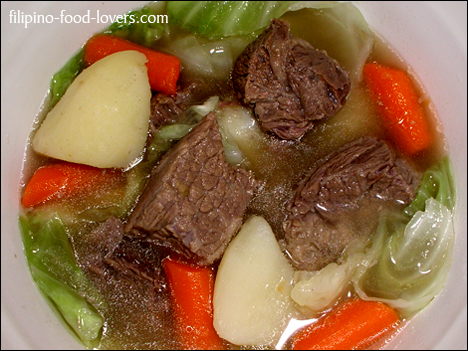It
is easy to spot street food vendors; where there are churches, schools,
recreational parks, or jeepney terminals, you will also see kiosks,
makeshift stalls, or food carts. In suburbs, you will see vendors or
hawkers with their bicycles or push carts almost everywhere. Street
food is a way of life for many people in this part of the globe. It is
a source of income for many Filipino families—some vendors testified
that their street food businesses enable them to send their children to
school. For students and working adults looking for inexpensive meal,
street food satisfy them for just half-the price of a meal in any
popular fast-food restaurant.
Instead of dining in a restaurant
for an authentic Filipino dish, why not go out in the street and have a
quick bite. There is nothing more authentic than those food in the
streets—untouched with the modern culinary flair. You will not only get
to enjoy the food, but you get to join the locals who are eating with
much gusto.
Banana Cue
Deep-friend
Saba (banana) that is coated in caramelized brown sugar and skewered in
bamboo stick. It is best to eat it while hot.
 Fish balls, squid balls and chicken balls
Fish balls, squid balls and chicken balls
Some
of the delicious deep-fried balls you can find in the streets. Fish
balls are made of finely pulverized fish meats. It is usually flat in
shape. Squid balls and chicken balls are some of its recent variation.
Typically, the balls are eaten by dunking it into your preferred sauce:
spicy vinegar, sweet and sour sauce, or sweet gravy.
Kikiam
A
Filipino version of the Chinese quekiam; made of ground pork and
vegetables wrapped in bean curd sheets. It is deep-fried to perfection
and served with your choice of sauce.
 Kwek kwek and tokneneng
Kwek kwek and tokneneng
Hard-boiled eggs dipped in orangey batter and fried until crispy. Kwek kwek use quail eggs while Tokneneng use chicken eggs.
Siomai
Steamed
dumplings, originally a Chinese dim sum, made with pork, beef, or
shrimp. For just 25 pesos or less, don’t expect it to
taste like those in the Dim sum house or restaurant.
Taho
Arroz caldo and goto
Rice porridge similar to Chinese congee with ginger and some herbs. Arroz caldo has chicken and egg while goto has beef tripe.
Batchoy
Noodle soup with pork innards or chicken meat, pork cracklings and vegetables
Chicharon
Filipino
cracklings made from different parts of the chicken and pig, seasoned,
and deep-fried. These include chicken skin (crispy chicken skin),
chicharong baboy (cracklings from pork rind), chicharong bituka
(crispy, deep-fried chicken and pork intestines), and chicharong
bulaklak (cracklings from pork omentum).
 Barbecue
Barbecue
Marinated
chicken and pork skewered and grilled over hot charcoal. Other grilled
food includes adidas (chicken feet), betamax (dried chicken or pork
blood), helmet (chicken head), isaw (chicken intestines), and pwet ng
manok (chicken ass)
 Halo-halo
Halo-halo
A
Filipino dessert made with a mixture of shaved ice, evaporated milk,
and assorted ingredients like beans, macapuno, jackfruit, gulaman,
tapioca pearls, sweet potato, corn, and nata de coco. It is then topped
with leche flan or purple yam. Halo-halo in restaurants would typically
include a scoop of icecream on it
Calamares
Deep-fried breaded squid rings
 Kakanin
Kakanin
This is a Filipino term for a variety of rice recipes. Some of the popular kakanin you will see in the streets are:
Puto: Rice cakes that comes in variety of colors, sometimes topped with cheese
Suman: Steamed glutinous rice, wrapped in banana or coconut leaves
Bibingka: Glutinous rice grilled in a clay pot
Palitaw: Sticky snack made from glutinous rice, served with sesame seeds and grated coconut
Sapin-sapin: Colorful, layered rice cake made from glutinous rice, topped with grated coconut or toasted coconut milk curd
Biko: Dark sweet glutinous rice cake
Maja blanca: Cocounut cake
Suman: Steamed glutinous rice, wrapped in banana or coconut leaves
Bibingka: Glutinous rice grilled in a clay pot
Palitaw: Sticky snack made from glutinous rice, served with sesame seeds and grated coconut
Sapin-sapin: Colorful, layered rice cake made from glutinous rice, topped with grated coconut or toasted coconut milk curd
Biko: Dark sweet glutinous rice cake
Maja blanca: Cocounut cake
Day-old Chicks
This is literally a one-day-old male chicks. They are deep-fried, served with spicy vinegar and eaten whole.
Balut
Saving the best for last is the balut
It is a hard-boiled three-week old duck egg, high in protein, and
believed to be aphrodisiac. It is very notorious because of how it
look, with its nearly-formed embryo. The proper way of eating balut is
to suck the amniotic fluid first before peel it off to eat the chick
and the yolk.
There
is no glamour eating street foods, but why seek for glamour when you
want fun and adventure. Your palate may not be the same again once you
have tasted the Filipino street foods. As double-dipping is very common
especially for fish balls, a little piece of safety advice: request for
a separate plastic cup instead for your choice of dip. Vendors usually
keep a separate bottle for their sauces. Also, be watchful on how
vendors prepare and cook their food.































